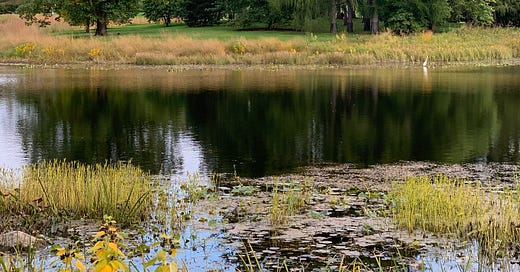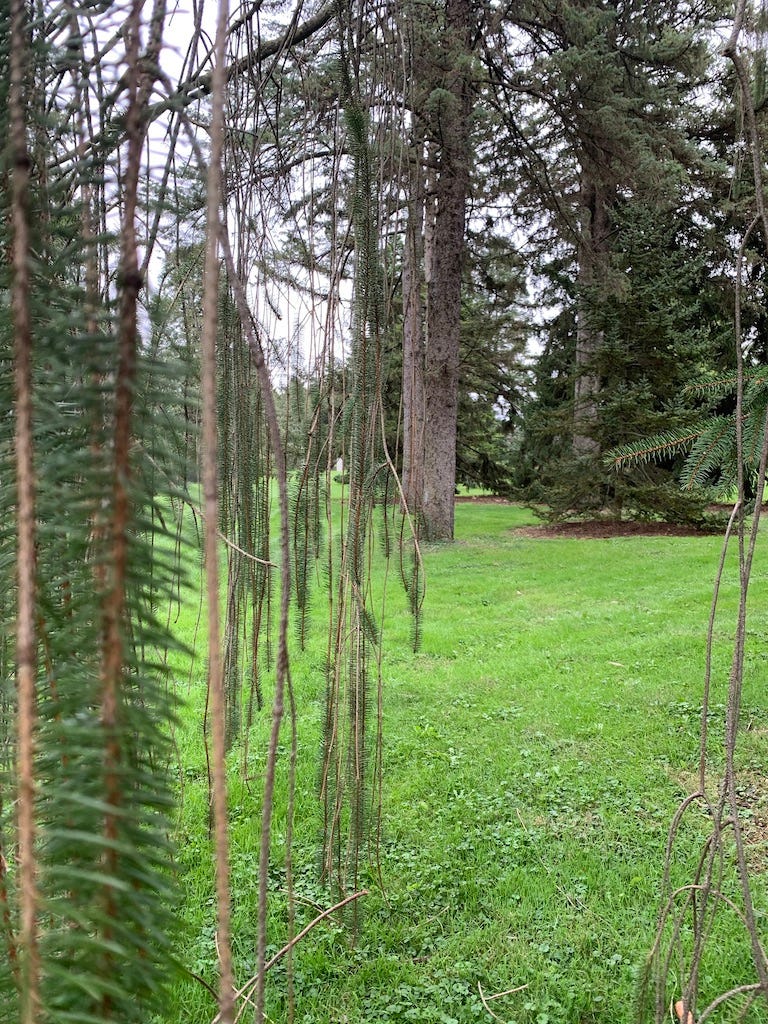You know that feeling you get when you’re standing amongst trees, gazing into their greenery and feeling uniquely connected to the forest around you? When a breeze rustles the branches in just the right way and light scattered and filtered through dense leaves sparkles on the ground around you, it’s easy to feel like a comfortable calm has settled in where you’d normally carry tension and stress. What if I told you there was a scientific reason for that feeling?
While listening to an episode of the wonderful Ologies podcast produced by Alie Ward (if you haven’t heard of Ologies before, you absolutely should give it a listen) an interesting fact jumped out at me: Neil Pasricha, an author known for writing about gratitude and the researcher Alie was interviewing, mentioned that trees release a “happiness hormone”, scientifically known as phytoncides, that reduce cortisol and adrenaline when you breathe them in. Studies (which I’ll link below) have also found that being in the forest can lower your blood pressure, pulse, and even improve immune function.
In Japan, people practice Shinrin-yoku, or forest bathing, to reduce stress and induce relaxation. While people have no doubt been visiting trees and taking in nature for its health benefits for centuries, the practice of forest bathing was officially named and promoted in 1982 by the Forest Agency of Japan. Since the 1980s, an abundance of studies have been conducted to determine why forest bathing seems to have such a profound effect on our well-being.
One study from 2009 looked specifically at phytoncides and their effects on the immune system. This group of researchers had previously found that subjects in a forest environment showed greater activity of natural killer (NK) cells, a critical component of the human immune system. To deduce what aspect of being near trees was responsible for the immune benefit, the scientists went on to study one particular component. Rather than having participants linger in a forest before measuring their immune function, the researchers put them up in a hotel and filled the room with phytoncides using a humidifier. They found that exposure to these phytoncides, even outside of a forest, increased activity of NK cells. They also found that participants had decreased adrenaline and noradrenaline in their urine. These findings together strongly suggest that phytoncides given off by trees are at least partly responsible for the benefits one feels from spending time in a forest.
Surely, as any of us who have experienced the wondrous awe of walking through a forest can attest to, these chemical messengers are not the sole reason forests help us feel healthier and more at peace. A study from this year conducted during the COVID-19 lockdown in Italy showed that even viewing video of forests induced a relaxing and calming effect when compared to a control video (a city environment), although the data was based only on self-report questionnaires. The authors proposed that the psychological effect that seeing trees has on our sense of wellbeing could serve as a baseline from which to measure the actual effect of biogenic volatile organic compounds (BVOC) like phytoncides.
This research clearly demonstrates that trees, greenery, and being in nature have proven beneficial effects, even if to some extent we all already felt this to be true from personal experience of spending time outdoors. Whether these benefits are caused by tree hormones in the air or simply observing nature in its majesty, the results send a clear message: go outside (if you can) and see more trees!
Studies related to Shinrin-yoku, forest bathing, and trees making us happier:
Issue 4 was short this week, and a little tangential, because I haven’t been feeling well. But next week we’ll be getting back into my grandfather’s journals to talk about something seasonal: natural Christmas decorations. There are a number of relevant illustrations and photos I’ll be including in this issue, so be sure to subscribe and stay tuned (and maybe take a walk outside today if you’re able!)
Which do you think is more directly responsible for the good vibes we feel from trees, inhaled tree happiness hormones or the psychological effects of seeing, hearing, and feeling nature? Let me know in the comments!
Thank you for subscribing! And if you’re not subscribed yet, you can do that right here
If you have topics you’re interested to hear more about or specific trees you’re interested in, please feel free to let me know in the comments
If you like what you’ve read so far, sharing Bulletin of Remarkable Trees with your friends would help a whole lot






I always wondered in the few old growth forests that I walked, if this is where the Ents dwell.